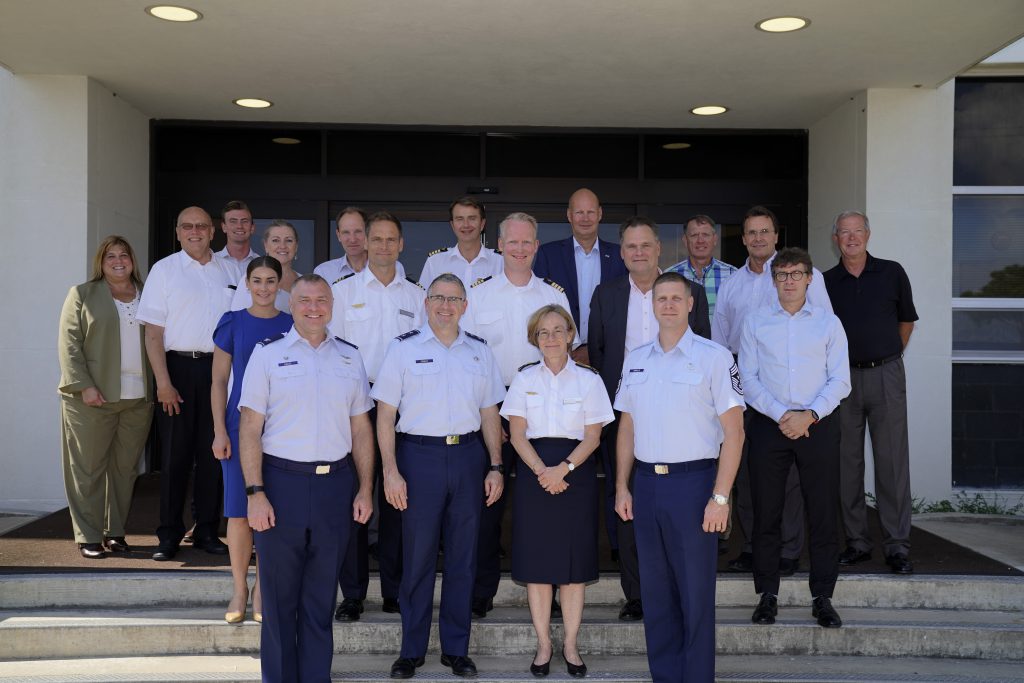U.S. and Swedish officials meet to advance joint S&T portfolio
EGLIN AIR FORCE BASE, Florida — Air Force Research Laboratory Commander Maj Gen William Cooley hosted the 23rd annual U.S.-Sweden Air Senior National Representatives forum, a meeting that provides leadership with an awareness of one another’s organizational structure, military requirements, programs and research investments. Maj Gen Cooley co-chaired this forum along with his Swedish counterpart, Brig Gen Ingela Mathiasson, the director of the Air and Space Division within the Defense Materiel Administration. The two leaders reviewed the current joint science & technology portfolio and discussed plans for future collaboration.
Jodi Nix, a senior operations research analyst within AFRL’s Plans and Programs Office, helped to organize this gathering between the two nations. She explains that AFRL collaborates with other countries to “identify and leverage the best global S&T accessible to help solve Air Force and Department of Defense (DOD) technology needs.” This forum, which dates back to 1995, represents the longest-standing relationship among AFRL’s international partners, she says.
Maj Gen Cooley affirms that international partnerships enable allied nations to share knowledge, advance S&T and ultimately strengthen global defense capabilities.
With more than two decades of collaboration, the U.S.-Swedish joint S&T portfolio has produced many achievements including the Automatic Ground Collision Avoidance System (Auto-GCAS). Initially fielded on F-16 aircraft in 2014, Auto-GCAS has saved seven aircraft and the lives of eight Air Force pilots.
Nix asserts that due to the country’s rich history of technology and innovation, Sweden offers a wide variety of technical expertise. AFRL is currently leveraging Swedish capabilities in six technology directorates with numerous applications benefitting the Aerospace Systems portfolio, she said.
Specifically mentioned in the 2018 National Defense Strategy (NDS), international partnerships represent a key focus area for the DOD. The NDS affirms that, “our allies and partners provide complementary capabilities and forces along with unique perspectives.” It further emphasizes that, “when we pool resources and share responsibility for our common defense, our security burden becomes lighter. By working together with allies and partners we amass the greatest possible strength for the long-term advancement of our interests.”
By engaging in these partnerships, the Air Force yields operational, economic, industrial, political and technical advantages. Across the larger enterprise, these relationships “enable the U.S to access the best defense technology while minimizing capability gaps with allies and coalition partners,” Nix said.
To support this collaborative effort, U.S. and Swedish officials meet once per year with hosting responsibilities alternating between the two countries. Sweden will host next year’s forum in the fall.

Maj Gen William Cooley hosted the 23rd annual U.S.-Sweden Air Senior National Representatives forum at Eglin Air Force Base in Florida. Brig Gen Ingela Mathiasson, the director of the Air and Space Division within the Defense Materiel Administration, co-chaired this meeting, which provides leadership with an awareness of one another’s military requirements, programs and research investments. (Courtesy Photo)
